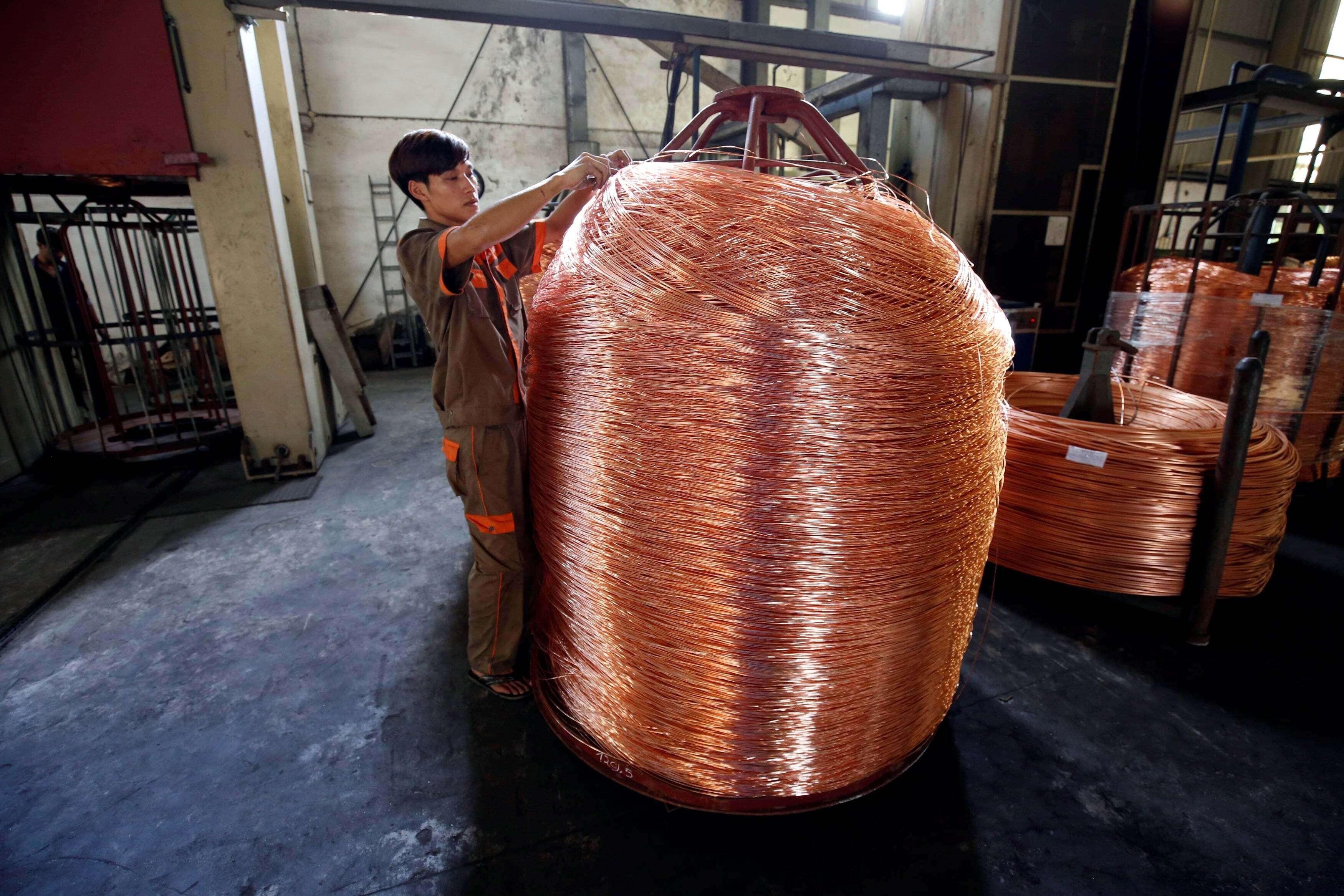Services are the hidden side of the US-China trade war

There's an untold story beyond the rise in tariffs.
Image: REUTERS/Aly Song
Tatiana Lacerda Prazeres
Senior Fellow, University of International Business and Economics in Beijing, and Former Foreign Trade Secretary of BrazilStay up to date:
United States
Discussions about the trade war between the United States and China have largely focused on goods. This is not surprising, given that tariffs have been the most visible weapon in this war. Tariffs apply to goods, not services – hence the focus on products. However, that misses a big, or maybe the biggest, part of the picture.
The impact of the trade war on services was the topic of a World Economic Forum panel that I recently joined, forcing me to think more thoroughly about it. I must admit that I was surprised to realize how pervasive the ramifications of this trade war have been on different services sectors. Services are the hidden side of this trade war.
Here are some thoughts on how the trade war is disrupting services trade:
Tariffs on goods affect the services content of those goods. For example, about 30% of the value of an automobile comes from the services that go into it. They include research, design and engineering services, distribution and logistics, and marketing and sales services, among others. So when a country raises tariffs on a car, a wide range of services providers are affected. As we know, the “servicification” of manufacturing is poised to rise, making the problem all the more relevant.
Tariffs on goods disrupt value chains – and the services providers along them. As manufacturing companies try to adapt to new trade barriers, services providers along the value chain also suffer the consequences. In some cases, they need to follow the moves of supply chains or risk being left out of business. Services provide the "glue" that connects the dispersed production stages of global value chains (transport, logistics, communications, financial and business services). If a company is relocating out of China (or the US) to avoid tariffs, most of its services providers are likely to be affected.
Slowing goods trade has an impact on the services that are key to moving goods across borders, such as maritime and road transport, express delivery and other logistics operators with an international focus. In August, China’s exports to the US dropped 1% and Chinese imports from the US contracted by 5.6%.
Business restrictions at the company level for national security reasons affect a wide array of services providers. The issue here is the so-called Entity List from the US Department of Commerce, which affects services. In the case of Huawei, if the ban goes ahead, companies such as Google and Microsoft could be forced to discontinue their services as providers to Huawei. US companies providing financial services, logistics and other services to Huawei could also be affected. Huawei, as a services provider, could be prevented from providing support and cloud services for US telecom carriers. Services providers in third countries could be affected as well. Emblematic as the Huawei case may be, it is only one case. Even if on a different scale, all the other Chinese companies on the list tend to face serious disruptions. Additionally, China has announced it will come up with its own list of “unreliable” foreign companies – so a lot more may follow.
Travel and tourism, as well as educational services, are examples of “pure services sectors” affected by the trade war, unrelated to tariff hikes. According to the US National Travel and Tourism office, revenue with Chinese tourism in the US grew, on average, 20% year-on-year for a decade, only to contract by 2% in 2018. The prospects for this year don’t look any brighter: China has officially discouraged its citizens from travelling to the US. In educational services, there is the potential for significant disruption in the flow of Chinese students to the US, affecting the business prospects of American universities and other educational establishments. In 2018 alone, there were approximately 350,000 Chinese students in the US.
Tighter investment screening procedures are disrupting investment flows to services sectors. Several countries are becoming increasingly selective about which investments to welcome into their markets, and the trade war has exacerbated that trend. The US has been targeting moves by Chinese companies in the American market – particularly the acquisition of tech companies or of companies that possess a great amount of data from US nationals.
Last but not least, restrictions on data flows have the potential to cause huge disruption to all services sectors. Fragmented governance over data can be extremely disruptive to all industries. What would be the impact of a digital iron curtain, or a “splinternet”, which divided the world’s two largest economies? At a minimum, layers of complications and rising costs for services providers would follow. This would deeply harm the increased “tradeability” of services, which has been boosted by the internet revolution and has even more potential with 5G technologies. The stakes are very high when it comes to policy choices on data governance.
These few points serve to illustrate the pervasive and disruptive effects of the so-called trade war on various services industries, and other examples exist. Moreover, the potential for further disruption is considerable. We should remember that what is being called a trade war is actually a tech-trade war – and technology is about services. Additionally, services and investment may be even more in the line of fire now that China and the US are getting close to exhausting the possibilities of applying tariffs to new products. As research by the Peterson Institute showed, if the US tariff plans materialize, by 15 December 2019 96.8% of US imports from China will be covered by tariffs adopted in the context of the trade war.
US efforts to contain China’s rise will mark the coming decades of US-China relations. The question is how bumpy these dynamics will be. Hopefully a better understanding of the impacts of the trade war will help to galvanize support for a more cooperative approach. Services industries should have more say in this fight. They are often invisible, but they are far from mere bystanders in this trade war.
Don't miss any update on this topic
Create a free account and access your personalized content collection with our latest publications and analyses.
License and Republishing
World Economic Forum articles may be republished in accordance with the Creative Commons Attribution-NonCommercial-NoDerivatives 4.0 International Public License, and in accordance with our Terms of Use.
The views expressed in this article are those of the author alone and not the World Economic Forum.
Related topics:
Forum Stories newsletter
Bringing you weekly curated insights and analysis on the global issues that matter.
More on Trade and InvestmentSee all
Madeleine North
August 6, 2025
JJ Enoch
August 6, 2025
Spencer Feingold
July 30, 2025
Charlotte Edmond
July 30, 2025
John Letzing
July 24, 2025






